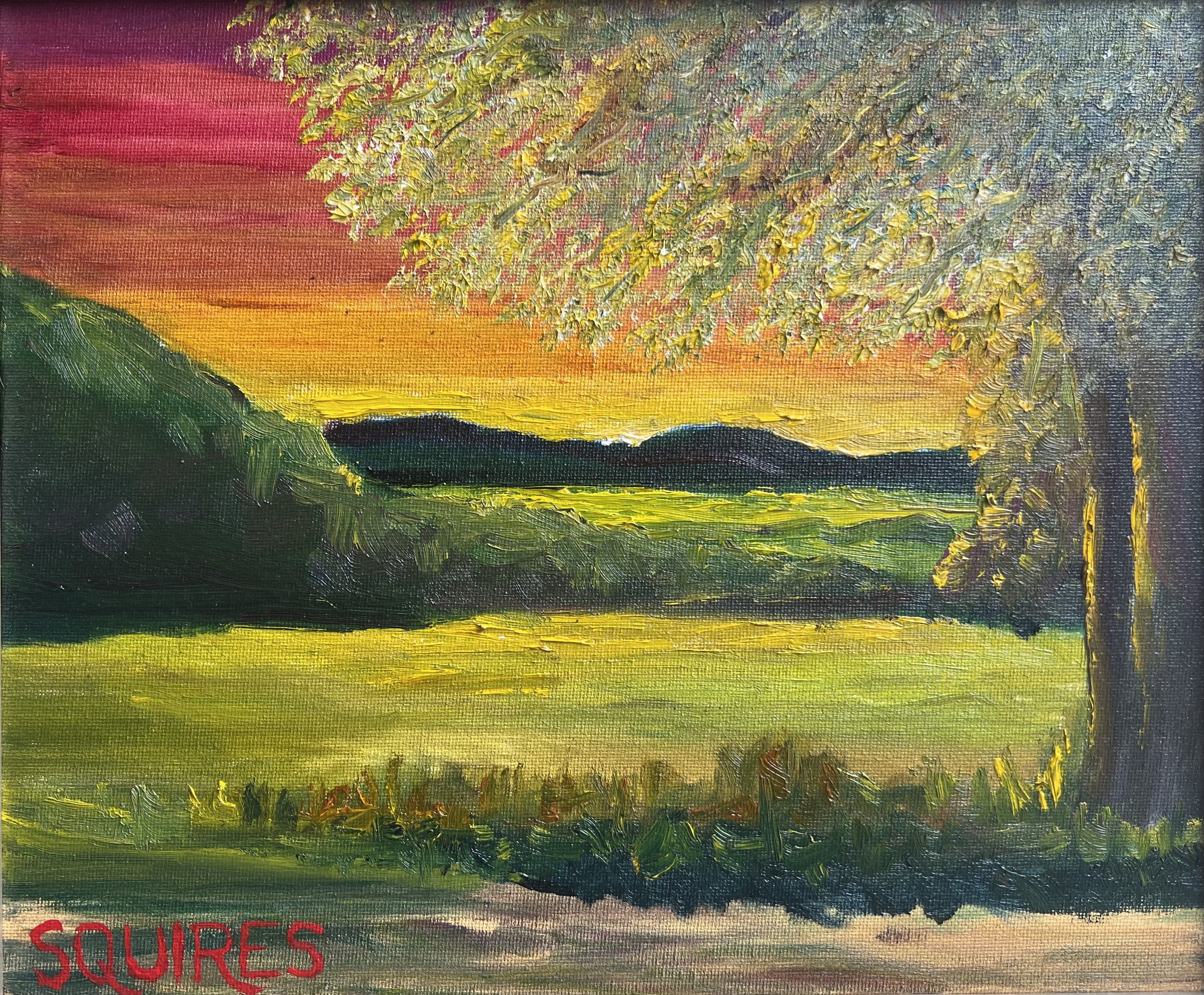Interview
Steven Squires
When Steven was eight, his parents hung a Renoir print from the Chicago Art Museum on his wall. Steven was mesmerized by the beauty of Renoir's vision of the world. His parents and he would watch pop culture painters who encouraged others to pick up a brush and paint. It took him 25 years to heed this advice. During the pandemic, Steven began painting with tutorials online and in books. His style was alla prima. After moving to the DFW area, he met a talented contemporary Impressionist who mentored him from tone to technique. Steven’s painting style and techniques shifted to a mix of realism and Impressionism. He can't help but feel a full circle moment, being able to connect as an adult painter with the little kid who admired paintings.
What is your background and how did you start your journey in the art world?
“I have always taken an interest in painters, with a particular love for the Impressionists. My career began as an educator and developed as an ethicist. An art review I wrote for a college class was so well-received that my professors used it in their classes, including for in-person European museum visits of the piece itself. At the start of the pandemic, I decided to try painting for the first time, mainly alla prima landscapes. I used online tutorials and books. When my family moved, I met a talented, contemporary Impressionist who is my mentor. My style has evolved to incorporate a blend of realism, impressionism, and even expressionism.”
What inspires you?
“Beauty and talent inspire me. Various artists have said that nobody can replicate the beauty of nature. The best we can do is to amplify the story from our nature, meaning that we adapt what we see with our vision and mood. This includes people. While visiting Aix-en-Provence, a lovely young woman in a silk dress exited the lift (elevator) and went the other direction. I only saw her hurriedly walking away. She was so beautiful that she was my first attempt at painting a person. Talent inspires me. I am intensely competitive. A talented young artist mentioned that she took her sunset painting to a gallery, and it sold within two hours. While I was happy for her, I decided to paint my frustrations because I wanted to create a beautiful sunset of my own. It turned out to be one of my best pieces of art.”
What themes do you pursue? Is there an underlying message in your work?
“Peace and tranquility are core themes of my art. The world seems so divided. We deserve to have art in our home and work that brings calm. Borrowing from St. Francis, we cannot be instruments of peace unless we have peace ourselves. The world of ethics influences art in ways I intend to explore. Ethics is descriptive, showing the world as it is, and it is prescriptive, showing what ought to be. In the future, I would like to reflect on what is and ought to be from a socio-political perspective. I also would like to paint people and professionals whom I consider my heroes.”
How would you describe your work?
“My work to date primarily features landscapes, some of which are alla prima, and ranges from a more realistic style to an impressionist style. I started with oils on small canvases. Now, I use acrylics or oils on larger canvases and boards. I have also worked on smaller projects, as it's essential for gifts (such as street art), especially to get kids interested in art. This includes the Bow & Berry Series, designed to provide folks with affordable, original, and even customizable art.”
Which artists influence you most?
“My historical influences include Monet, Renoir, and Delacroix. Van Gogh was the most significant shift in my artistic perspective. I recall looking at a van Gogh in The Cleveland Museum of Art as a teenager, seeing the thickness of his paint and brushstrokes, and thinking, ‘Who paints like that?’ Now that I paint, I find his technique and way of seeing the world to be amazing. I have contemporary folks I admire. Niki Gulley's work is like a ray of light that warms my soul directly. We have about twenty of her paintings, and I am lucky to call her my mentor. Malcolm Dewey from South Africa is an exceptional impressionist and teacher. Layne Johnson, with his unbelievable landscapes and clouds, is fabulous.”
“Peace and tranquility are core themes of my art. The world seems so divided. We deserve to have art in our home and work that brings calm.”
What is your creative process like?
“Most often, I witness something. I can do a quick sketch if I have the right tools. If not, I can take a picture. That instance of inspiration can be a mental picture if I don't have a camera. Sometimes, it is good to see how ideas interact by using tools to do mockups. For instance, tools can turn a photo or basic idea into a different time of day or superimpose other subjects. I limit how much I use these, so that my audience knows the painting is me.”
What is an artist’s role in society and how do you see that evolving?
“An artist's role is prophetic - to tell the truth about society, namely the way it is and the way it could be. Speaking truth to power is difficult but necessary. Because of art's influence, art can empower others to do the same. When art is repressed, an artist becomes a foot soldier or warrior, carrying on in the face of adversity. Artists can also be peacemakers through art's tranquility and messages, bringing people who differ together to the same table.”


































